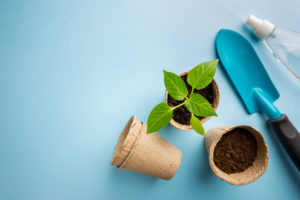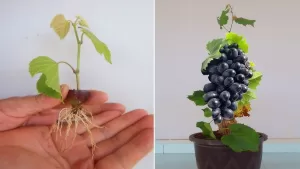Four Simple Self-Watering Techniques to Keep Your Plants Happy While You’re Away From The Garden

Whether you’re traveling long distances or visiting the in-laws, using self-watering techniques can help you save time and money while maintaining your plants. Plants need water to survive and thrive even when you’re away, but this isn’t always possible. Try these four simple self-watering techniques to keep your plants happy while you’re away. They won’t need watering every single day, but they’ll be happy while you’re away!
The wicking effect is another of the self-watering techniques. By covering your soil with a wicking material, water will travel deeper into the roots. This trick also helps the water get into air pockets in the lower layers of soil. A good planter should also have a reservoir that’s large enough to hold several gallons of water. Another helpful technique is to use self-watering planters. They’ll save you a lot of time and energy when watering your plants.
The use of self-watering techniques helps you keep your plants’ soil consistently damp without over-watering them. Different methods work for different plants. For example, hardy rubber plants need more water than ferns, which thrive on humidity and moisture. Also, take into account the size of your plants and choose a method that is appropriate for its needs. And make sure the soil stays consistently moist, but not soggy.
Tomatoes and other plants need one to two inches of water per week, but they don’t respond well to inconsistent watering. Even if you only water them once a week, you could end up lowering their yields. A self-watering container is a good way to eliminate all the guesswork. And if you are forgetful, a self-watering planter will last for a week on a full reservoir even in 100-degree heat.
Another DIY self-watering technique is a wick system. You need a container with a hole in it and absorbent material to fill it. Wick material can be anything from string, twine, yarn, or even an old T-shirt. A thin cord can be braided to make a thicker wick. Felt or microfiber cloth can also be used as a wick. These are all inexpensive self-watering techniques that are effective in any garden.
Another easy self-watering technique is to water plants using stones. Small plants don’t need a lot of water, but they do need plenty of moisture. To get the water you need to keep the soil moist, you can buy small trays that have stones or plastic liners. Then fill the tray with water until it’s about one-eighth of an inch above the stones. Your plants will absorb the water that’s above the stones and bask in the moisture created by the evaporated water.
Another DIY self-watering technique is to use a recycled watering container as a reservoir. Pour clean water into the container, and the jug will fill up over time. The jug will stay moist for several days – if you’re using it regularly. Then you can place the container upside down so it won’t wilt. After several days, you’ll notice the roots have absorbed more water.
Another easy method is to use DIY containers for your plants. You can even use recycled bottles for these containers. Many diy containers are small enough for a windowsill and large enough to hold a plant or two. Some DIY containers, such as those made by designsponge, are made from wine or beer bottle tops. If you’re planning to use them in your garden, you can get rid of the strings by using sports top bottles. You will need aquarium gravel, soil, and aquarium gravel to make your container self-watering.
Alternatively, you can also use a cotton clothesline. Cotton clothesline can be purchased at most hardware stores. Thread it into the soil close to the plant roots to water it. You don’t want to disturb the roots. However, cotton clothesline works great for watering plants. But, you should remember to push it in close to the soil surface to avoid disturbing the roots. You can also use more than one clothline to water different plants.
Another self-watering technique involves sub-irrigation. When the plant needs water, it will pull it from the water bath. This will ensure that your plants are getting the water they need at all times. This will eliminate the need for human care. In addition to saving time, this self-watering technique is a great way to save money. You’ll be free to spend more time on other projects! But, if you’re still not sure how to set up the self-watering system, consider the benefits.

